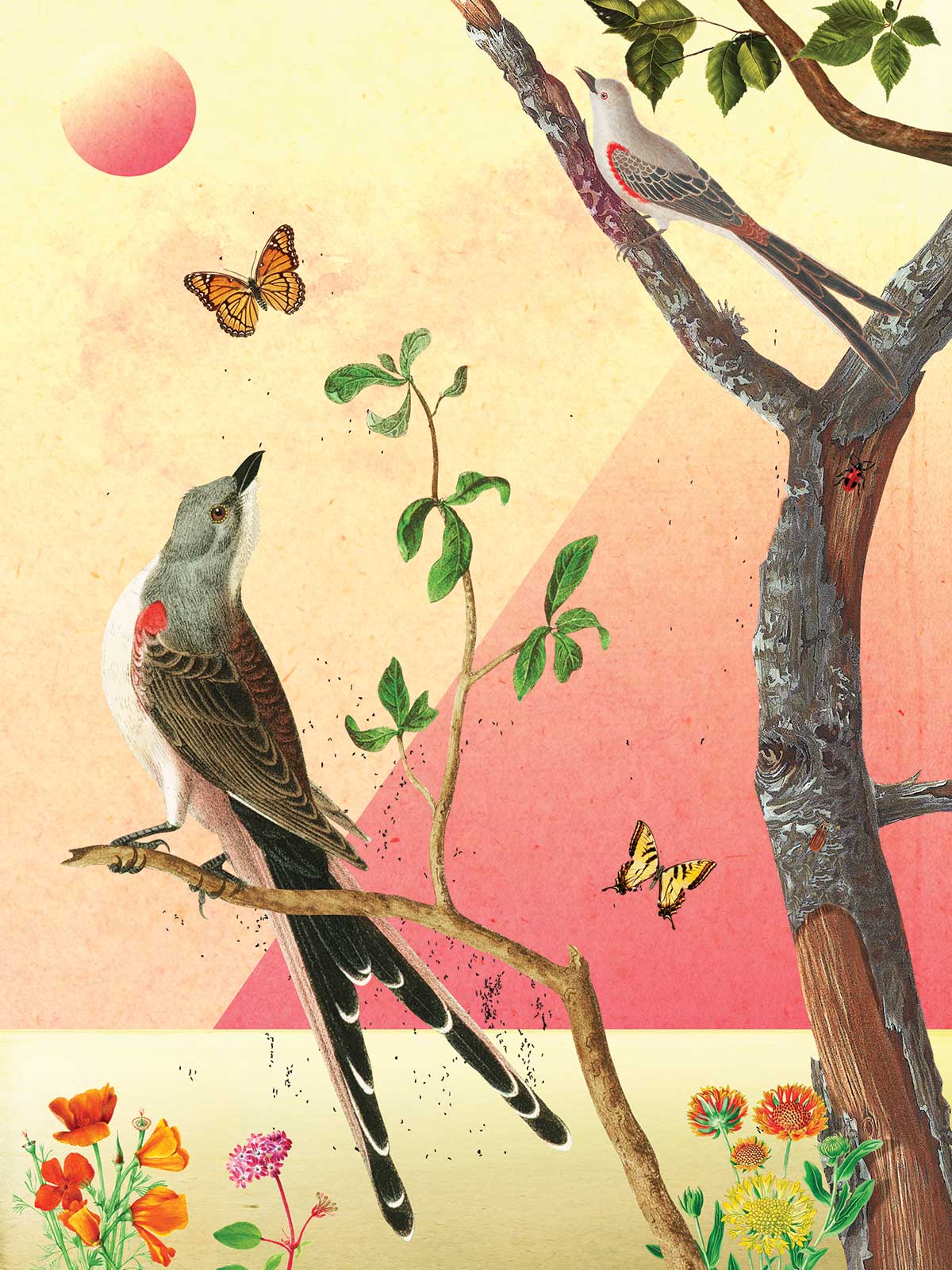Growing up on a West Texas ranch, my sister and I kept our eyes peeled for the first signs of spring as we anticipated summer, a most magical time when there was no school and endless days filled with swimming in tanks, rolling in cottonseed and helping dad feed the livestock. The scissor-tailed flycatcher was always our sign that spring had arrived.
The scissortail, also known as the Texas bird of paradise, is easy to identify by its long, forked tail and the radiant salmon color under its white-edged black wings. They inhabit the south-central U.S., including nearly all of Texas, which is home to around 72% of the entire scissortail population during breeding season, March to August. The birds favor savanna habitats—warm, flat grasslands with scattered trees—and are often seen on utility poles and fences.
Scissortails are showoffs. In general, males have longer tails and more intense plumage colors. A long tail is an indicator of health, and males like to show it off with aerial demonstrations like backward somersaults.
That iconic tail makes the birds easy to spot for novice birders like Caleb Helsel, a student at Hill Country Middle School in Austin and a founding member of the Austin Avocets, a group of young birders. One summer he kept a tally of every scissortail he saw. The marks he made in his notebook added up to more than 200.
“There’s so many cool birds out there, and there’s always more to learn about them,” Helsel says.
“Pay attention to the birds. It’s a good way to spend your time.”
Helsel enjoys birding so much that he has learned to bird by ear, meaning he can identify a bird just by the sounds it makes, and he maintains a checklist of the birds he’s seen on eBird, an online platform managed by the Cornell Lab of Ornithology that allows people to report bird sightings and share photos and recordings. Helsel has many birding mentors, including the internationally renowned Texas birder Victor Emanuel.
Emanuel founded Victor Emanuel Nature Tours in 1976, leading birding and nature tours across the globe. On his 70th birthday, a flock of around 70 scissortails sang to him at Hornsby Bend Bird Observatory in Austin. He remembers it as one of his most memorable interactions with the species.
“The scissortail is one of the most beautiful and striking birds in the world,” Emanuel says. “By studying birds and nature, you get connected to the world in a way that you aren’t … with other hobbies. Sharing something in nature is a very powerful experience.”
During breeding season, most scissortails return to the same area they migrated to the previous year. No wonder seeing one perched on the telephone wire in front of our house every summer was like seeing an old friend.
Females lay up to three nests each breeding season, and each nest typically has three to five eggs, white with reddish-brown spots, that take two weeks to hatch. It takes at least a year for those long tail feathers of up to 12 inches to come in.
The birds, which eat flying insects like beetles, grasshoppers and crickets, are important to ecosystems. “Scissortails are great indicators of the ecosystem’s health, and as those populations decline, the health of the land is declining, and that’s going to start affecting us,” says Jim Giocomo of the American Bird Conservancy.
There are 4 million fewer scissortails now than there were in 1966—a population loss of about 31%—according to data compiled by the U.S. Geological Survey. Though the species is not listed as endangered, conservation advocacy network Partners in Flight estimates a further 50% of the population could be lost in the next 37 years if landowners don’t make changes.
The list of threats to the scissortail includes pesticides and loss of native grasslands, says Cliff Shackelford, state ornithologist for the Texas Parks and Wildlife Department and a member of Deep East Texas Electric Cooperative.
“Texans don’t hear the sweet whistle of the bobwhite across much of Texas anymore due to the drastic change to our grasslands and how we treat those grasslands” Shackelford says. “Hopefully the scissortail won’t be the next to disappear.”



